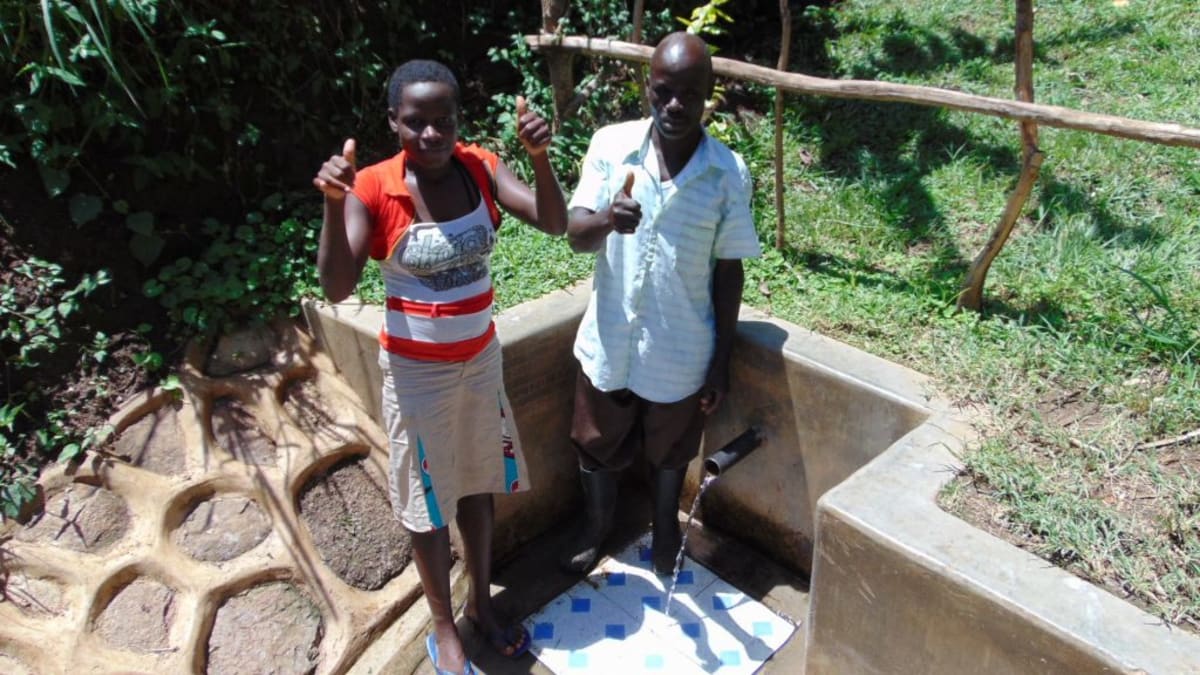Jairus Odera has an unprotected spring on his property that he and the community use to meet their water needs. However, it is an open water source that is exposed to contaminants making it unsafe for drinking.
He heard about TWP and WEWASAFO's partnership and came to the office for more information about us. He learned that we work with community members like him to protect springs and he proceeded to apply for the protection of the spring on his property.
The spring serves 28 households in the community. The water is used for drinking, washing, and cooking. This unprotected spring is the only source around the area that the community is fetching water from.
People have to step in the same water when fetching. Cows also stand in the water when the drink from it, contaminating it further.
Community members say that the money spent treating waterborne diseases, such as typhoid and diarrhea, is a significant cost. They lose a lot of money which would be otherwise used to do things that will improve their living standards.
Sanitation in this community is in need of improvement. Many people do not have latrines and the few who have the latrines are in poor condition. Few people have dish racks, clotheslines, and bathrooms.
The protection of the spring and associated training will help raise sanitation standards, said community members. It will be a big boost for people who largely live as subsistence farmers, growing maize, beans, sugarcane and other vegetables.
A normal day in Nambatsa Village begins at 6:30am. The children and women are seen carrying jerrycans going to fetch water from their unprotected spring for use before they go to school. When enough water is collected, the women go and make breakfast for their children. They go back out to fetch water after breakfast.
Some women go to the market to sell their crops during the day while the men work on other tasks in the village or at home.
Here’s what we’re going to do about it:
Training
Community members will attend hygiene and sanitation training to give them a chance to learn about healthy practices and their importance. The facilitator plans to use PHAST (Participatory Hygiene and Sanitation Transformation), CLTS (Community-Led Total Sanitation), ABCD (Asset-Based Community Development), group discussions, handouts, and demonstrations at the spring. One of the most important topics we plan to cover is the handling, storage, and treatment of water. Having a clean water source will be extremely helpful, but it is useless if water gets contaminated by the time it’s consumed.
Handwashing will also be a big topic. And since open defecation was encountered here, this is at the top of our list of things to address. Waste always needs to be disposed of properly, or else it will be spread by flies or rainwater.
Training will also result in the formation of a committee that will oversee operations and maintenance at the spring. They will enforce proper behavior around the spring and delegate tasks that will help preserve the site, such as building a fence and digging proper drainage.
Training will inform the committee and the rest of the community about what they need to contribute to make this project a success. They must mobilize locally available materials, such as bricks, clean sand, hardcore, and ballast. All community members must work together to make sure that accommodations and food are always provided for the work teams.
Sanitation Platforms
On the final day of training, participants will select five families that should benefit from new latrine floors. The five families must prepare by sinking a pit for the sanitation platforms to be placed over.
Spring Protection
Our artisans will protect the spring and ensure that the water is safe, adequate and secure. Construction will keep surface runoff and other contaminants out of the water.
Fetching water is predominantly a female role, done by both women and young girls. Protecting the spring and offering training and support will, therefore, help empower female community members by giving them more time and efforts to engage and invest in income-generating activities.
This project is a part of our shared program with Western Water And Sanitation Forum (WEWASAFO). Our team is pleased to provide the reports for this project (edited for readability) thanks to the hard work of our friends in Kenya.

 Protected Spring
Protected Spring
 Rehabilitation Project
Rehabilitation Project






























